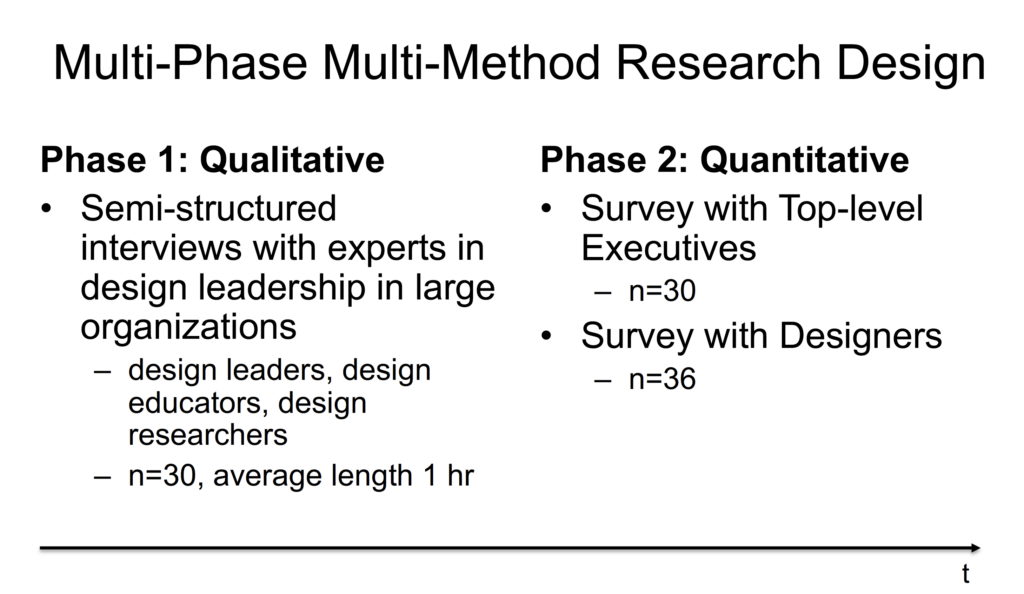The research of the doctoral thesis was focused on the development of knowledge of a particular context that impacts design, and the expectation is that the knowledge produced may later transform in different forms of practice. The research started with a given statement describing a situation, and has ended in specification to implement a solution, artifact, or the basis for such a follow-up. We identified the need for instruments that collected factual knowledge, statistical evidence and authoritative testimony, and we had identified from start that the topic would entail biases and assumptions that needed to be addressed with potential counterclaims.
We were inclined to design a methodology that would result in a diversity of views, connecting knowledge in an iterative way, learning from different perspectives, juxtaposition and explaining complexity. We also needed to make design decisions regarding timing and issues of simultaneity and dependence. After the qualitative and quantitative components were brought together, we needed a strategy to mix, integrate the results in a Point of Integration, which in the case of this research was the list of insights that explained the inquiry and at a later stage the meta-model for design executives.
In terms of typology, we settled on a first phase of qualitative data collection and analysis, followed by the collection of quantitative data to test or generalize the initial qualitative results, a dynamic hybrid combination of initial secondary research to validate the research inquiry, surveys that focused not only on designers but on executives, interviews with entities that would provide recognized perspectives and experience, while doing literature review on related topics.
After validating the inquiry with factual data, we began 1:1 interviews with entities that could provide insights and inspiration based on their own experience in the domain, the intention was that these conversations would point toward the questions and topics that would be used to build two distinct surveys, aimed at two populations, executives and designers.
